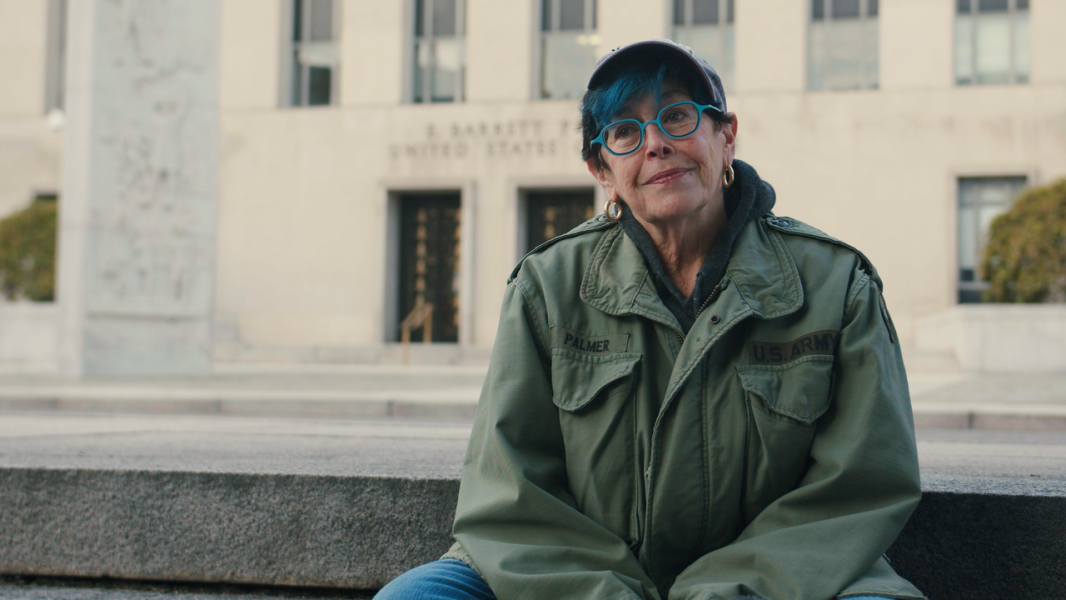
Save this storySave this storySave this storySave this story
Watch “Public Defender.”
“You can see the Capitol from here,” Heather Shaner, a criminal-defense lawyer, says as she walks with her client Jack Griffith, a.k.a. Juan Bibiano, a.k.a. Liberty Dragon, to his sentencing hearing at the E. Barrett Prettyman Federal Courthouse, in Washington, D.C. “It’s beautiful, right?”
“It is beautiful,” Griffith replies, as they pause to look at the vista, down one of D.C.’s wide streets. His hair is styled in a double-braided mohawk, half red and half blue. “Not trying to be funny, but it’s beautiful inside, too.”
Griffith had formed that opinion when he entered the Capitol on January 6, 2021. He was part of a mob that attacked the complex, after a rally at which Donald Trump claimed that the Presidential election was being stolen from him, in an effort to stop a joint session of Congress from tallying the Electoral College votes. Griffith had driven there from Tennessee. Footage from D.C. that day shows him wearing a MAGA hat and recording video selfies in which he chatters giddily about taking down the New World Order; at the time, he was twenty-five, and not even registered to vote. Shaner, who was assigned to defend him, after he was indicted on four federal charges, because he could not afford a lawyer, calls Griffith “a unique individual.” But one of the themes of “Public Defender,” a film about Shaner and the legal aftermath of January 6th, is that she sees all her clients that way, or tries to. The film was written and directed by Andrea Kalin, and produced in partnership with the Pulitzer Center.
The New Yorker Documentary
View the latest or submit your own film.

Kalin had been acquainted with Shaner for years, and, knowing that she was politically on the left—there is a faded decal from the Southern Poverty Law Center on the front window of Shaner’s house, which is also her office—realized that there might be a story to tell about her representation of January 6th defendants. A point of connection that Shaner has with Griffith, who is one of two clients featured in the film, is that she, too, has a streak of blue in her hair. She started dyeing it that color, for fun, when she turned seventy, seven years ago. On the way to court, Griffith offers to carry her purple-sequinned backpack. Footage from the Capitol shows him inside the building for less than fifteen minutes. In her sentencing plea, Shaner portrayed him as an impulsive young man whose social-media habit made him susceptible to misinformation. He also created a video game in which Trump is the superhero.
Shaner has represented forty-two January 6th defendants so far. That sounds like a lot, but the Department of Justice has brought close to fifteen hundred such cases. More than three hundred are still pending—including, of course, the case brought by Jack Smith, the special counsel, against Donald Trump, a.k.a. the former President, a.k.a. the Republican nominee in this year’s election. Between Trump and Griffith are figures who were ringleaders or were instrumental in the violence, notably members of the Proud Boys. Shaner helped him to reach a plea deal on a single misdemeanor charge of parading, demonstrating, or picketing in a Capitol building. Trump, who still faces four felony counts, has been working with his own lawyers, with a boost from a pair of Supreme Court rulings.
The first of those decisions, Trump v. United States, gives ex-Presidents broad immunity from criminal prosecution for their official acts, and thus isn’t much use to anyone who has never been President. However, in the second one, Fischer v. United States, the Court found that prosecutors had overreached in how they deployed one statute—obstruction of an official proceeding—which was used against hundreds of defendants, including Trump. (Griffith wasn’t indicted on that charge.) Some of those cases have already been resolved one way or the other, but others may need to be adjusted in light of Fischer. That outcome is a reminder that the legal response to January 6th was in some ways an exercise in improvisation in the aftermath of an unprecedented event—what amounted to an attempted coup. Calibrating the response, and making sure, among other things, that the right precedents are set, is a project in which defense lawyers like Shaner play a necessary and important role.
As significant as the assault on the Capitol was for the country as a whole, it was also a deeply felt local event for people, including Shaner, who live in Washington. And it was a heavy load for the city’s criminal-justice apparatus. “You’re talking about fifteen hundred cases coming into one courthouse,” Shaner told me. She had long been one of the private lawyers whom the Office of the Federal Public Defender relied on to defend indigent clients. When she got the call after January 6th, though, she insisted on one condition: she would not represent anyone accused of assaulting a police officer. The problem wasn’t really the nature or the severity of the crime; she’s been a defense attorney for more than four decades, and has dealt with some rough characters. What stopped her, she said, was that she “knew some of the police personally.” After all, often enough, over the years, in cases big and small, they had testified against her clients. They were a part of her life. ♦
Sourse: newyorker.com